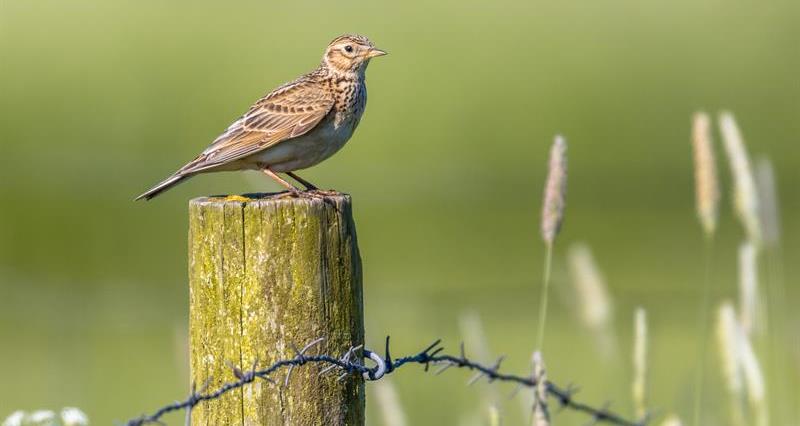What
Skylark plots are undrilled or sprayed-out patches in winter cereal fields. Each plot is at least 16sqm (e.g. 4m x4m) and the optimum density is two plots per hectare.
They are important for conserving skylark numbers if spring crops form less than 25% of your cropped area. Skylarks do not generally nest in the skylark plots, but instead use them for foraging. At the maximum density, skylark plots take up 0.32% of the field area: less than the area taken up by the tramlines.
Why
In a conventional winter cereal field, skylarks can forage easily in April but, by June, more than half of the foraging has to take place outside the field because of the closed crop canopy. If adjacent fields also contain winter crops, skylarks will struggle to find sufficient food.
However, in fields with two skylark plots per hectare, they continue to forage easily within the field throughout the season. Two plots per hectare in winter cereals will boost the number of skylark chicks by 50%. If 20% of winter cereals were managed with two skylark plots per hectare then the national decline of skylarks would be halted.
Yellow wagtails also struggle to breed successfully in winter cereals late in the season, so may well benefit from skylark plots too.
How
Create skylark plots in winter cereal fields. The fields should be more than 5 ha in size and have an open aspect. Fields bounded by trees or adjacent woods are not suitable, unless they are larger than 10 ha.
- Create skylark plots by either switching off the drill (or lifting it up) to create undrilled patches at least 3m wide and a total area of at least 16sqm, or, if you have a drill that cannot be switched on and off easily, then drill the field as normal and spray the plots out with a total herbicide before the end of December.
- The ideal number of plots in a field is two per hectare. They should not be connected to the tramlines and should be sited away from field boundaries and telegraph poles.
- Research shows that plots sited more than 80m from the edge of the field perform significantly better.
- No further action is necessary - skylark plots will receive the same sprays and fertiliser applications as the rest of the field.
- If you have concerns about difficult weeds, such as blackgrass or wild oats, arising within the plot, you can control them using a knapsack sprayer – although this was rarely required in skylark plot trials.
